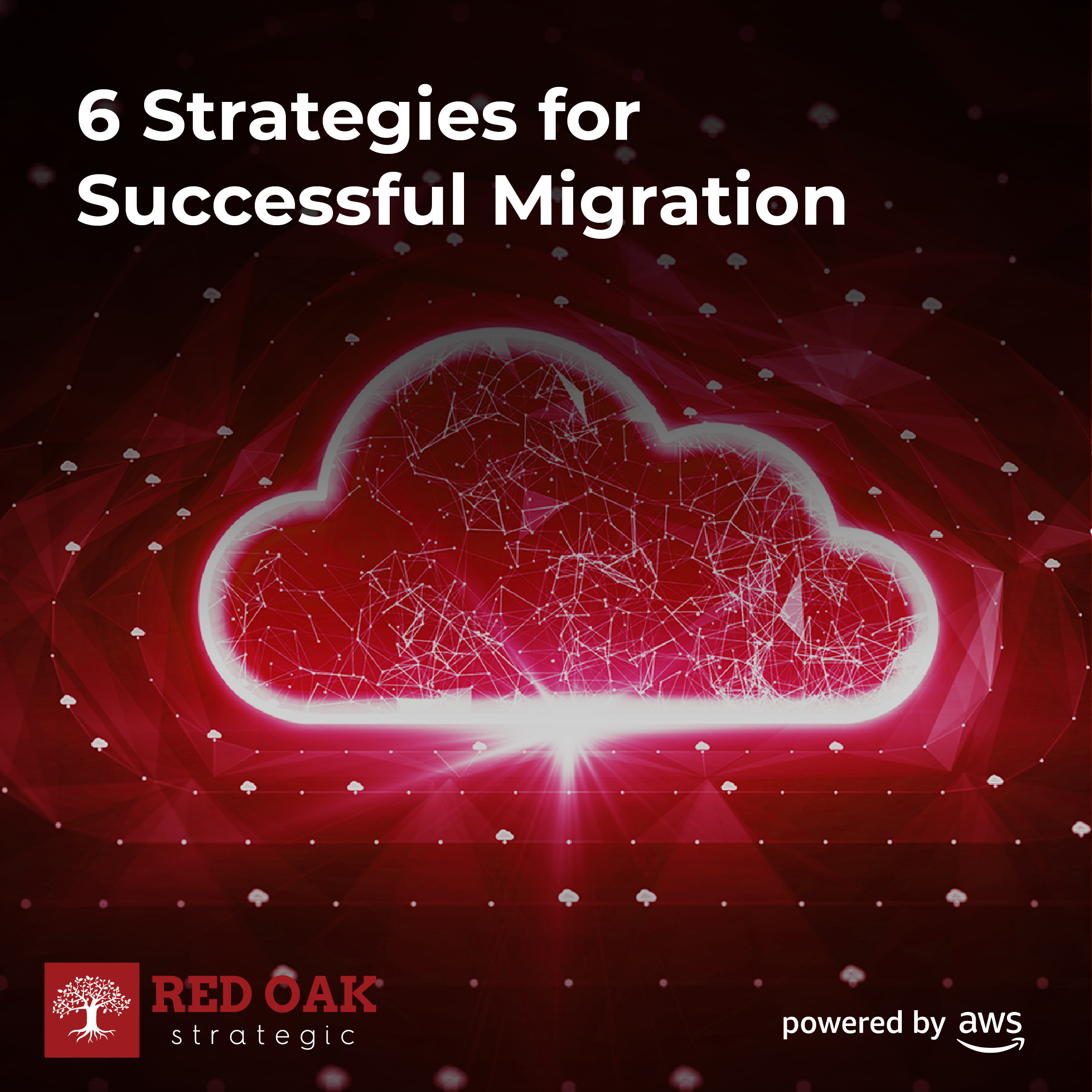
Table of Contents
Need Help? Get in Touch!
At Red Oak Strategic, we understand that migrating to the cloud can be a complex process, and that's why we have handpicked these strategies to help you migrate to the cloud.
Using the information gathered during the Portfolio Discovery and Planning phase, we help our clients outline a plan for how they'll approach migrating each application in their portfolio and in what order. The 6 strategies we'll outline in this post build upon the 5 R’s outlined by Gartner in 2011. We've found that each of these strategies can be useful for different organizations, depending on their specific needs and complexity of their existing applications.

Rehosting (Lift-and-Shift)
Rehosting is a straightforward approach to cloud migration where an application is lifted from its existing infrastructure, and shifted to a cloud platform with minimal changes. This strategy is often used for applications that do not require extensive modifications, as the main goal is to get the application running on the cloud as quickly as possible.
Rehosting can be automated with tools, such as CloudEndure Migration and AWS VM Import/Export, and can result in significant cost savings.
Replatforming (Lift-Tinker-and-Shift)
Replatforming involves optimizing an application before migrating it to the cloud, but without changing its core architecture. This approach is typically used when organizations want to take advantage of cloud-based services, such as database-as-a-service or fully managed platforms, to reduce the time and effort spent on managing their applications. Companies can migrate hundreds of web servers from on-premises to AWS to switch from a licensed platform to an open-source equivalent, resulting in profit savings and increased agility.
Repurchasing
Repurchasing involves moving to a different product, typically a SaaS platform, such as Salesforce.com for CRM, or Workday for HR. This strategy is often used when organizations want to take advantage of the latest and best-in-class technologies, without having to build or maintain the application in-house.
Refactoring / Re-architecting
Refactoring and re-architecting involve re-imagining how an application is designed and developed, typically using cloud-native features. This strategy is often used when organizations want to add new features, improve performance, or increase agility, and are unable to so within their current architecture. Migrating from a monolithic architecture to a service-oriented or serverless one can be
expensive but also deliver significant benefits.
Retiring
Retiring involves removing applications that are no longer necessary or have reached the end of their life cycle. This strategy is an important part of the migration process, allowing organizations to focus their resources on more critical and valuable applications.
Re-evaluating
Re-evaluating involves revisiting the migration strategy and making changes as necessary. As organizations progress through their migration journey, they may encounter new challenges and opportunities, and learn from their experiences. Re-evaluating their migration strategy allows organizations to adjust their approach and remain aligned with their goals and objectives.
Our team have extensive experience working with organizations of all sizes, across a wide range of industries, to migrate applications to the cloud. Our primary focus is on automation, accuracy, and deep analysis in existing platforms; we give businesses the confidence to understand and leverage their data to make the most informed decisions possible.
Book a meeting to learn more about how we can help.
Contact Red Oak Strategic
From cloud migrations to machine learning & AI - maximize your data and analytics capabilities with support from an AWS Advanced Tier consulting partner.
Related Posts

Ready to get started?
Kickstart your cloud and data transformation journey with a complimentary conversation with the Red Oak team.





